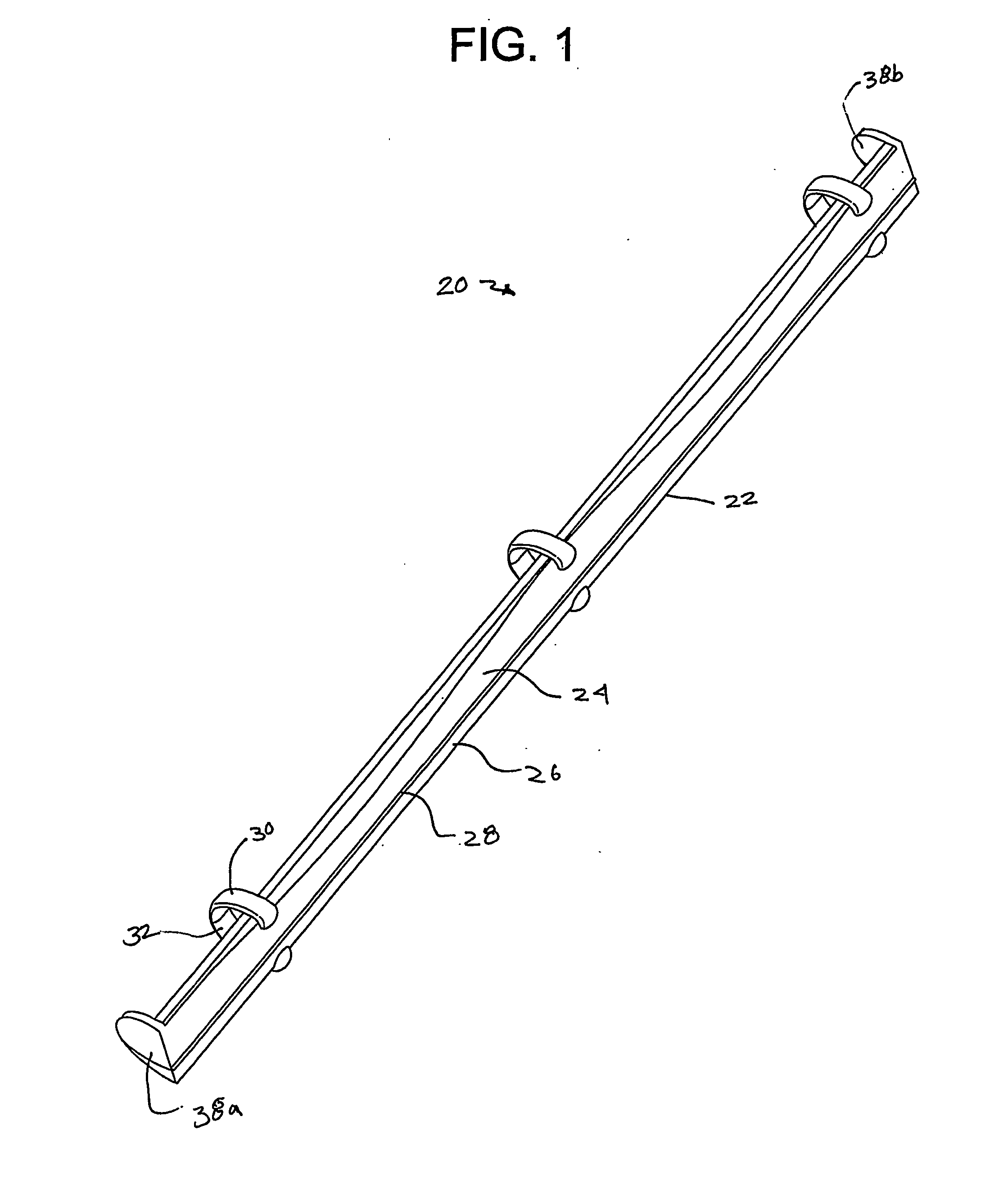Standardized binding elements
- Summary
- Abstract
- Description
- Claims
- Application Information
AI Technical Summary
Benefits of technology
Problems solved by technology
Method used
Image
Examples
Embodiment Construction
[0037] Turning now to the drawings, there are shown in FIGS. 1-7 various views of a binding element 20 constructed in accordance with teachings of the invention. The binding element 20 includes an elongated spine 22, having two elongated sections 24, 26 with a living hinge 28 therebetween. Pairs of fingers 30, 32 extend from the elongated side sections 24, 26, respectively, for insertion into the perforations of a stack of sheets (not shown). The elongated sections 24, 26 pivot relative to one another along the hinge 28 to move the binding element 20 between the open position for receiving a stack of sheets and the closed position (as shown) for retaining a stack of sheets, the fingers 30,32 forming closed loops when the binding element is in its closed position, as shown.
[0038] In accordance with the invention, the binding element 20 is arranged for use with sheets including standard sizes of loose-leaf perforation patterns, examples of which are graphically illustrated in FIG. 19...
PUM
 Login to View More
Login to View More Abstract
Description
Claims
Application Information
 Login to View More
Login to View More - R&D
- Intellectual Property
- Life Sciences
- Materials
- Tech Scout
- Unparalleled Data Quality
- Higher Quality Content
- 60% Fewer Hallucinations
Browse by: Latest US Patents, China's latest patents, Technical Efficacy Thesaurus, Application Domain, Technology Topic, Popular Technical Reports.
© 2025 PatSnap. All rights reserved.Legal|Privacy policy|Modern Slavery Act Transparency Statement|Sitemap|About US| Contact US: help@patsnap.com



